Fires in the tropics: ITTO shines a light on forest fires across tropical regions
10 June 2025, Rome
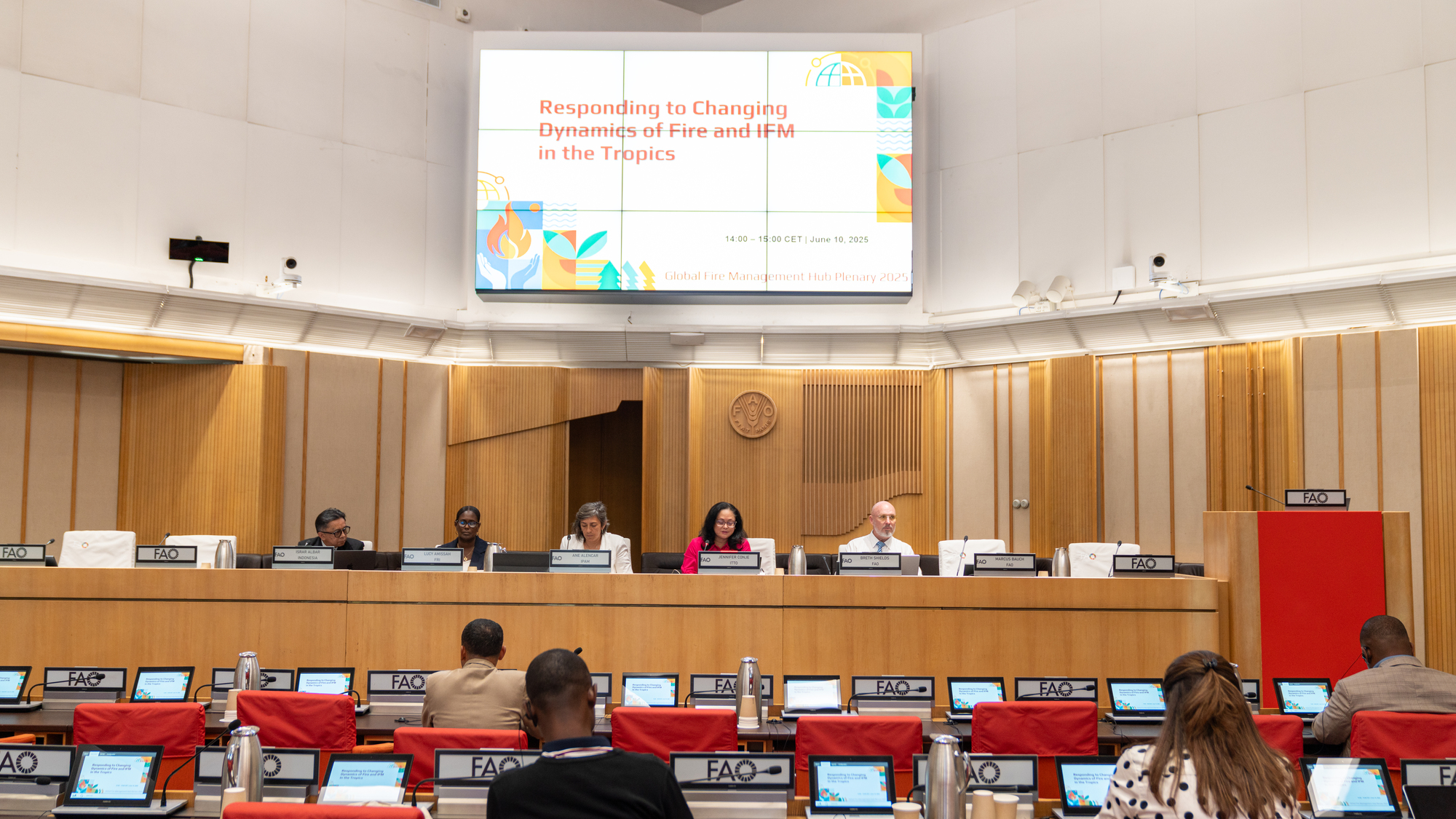
ITTO organized a side event to put a spotlight on tropical forest fires at the Global Fire Hub Plenary 2025. Photo: FAO/Roberto Cenciarelli
Wildfires have dominated global headlines in recent years. In 2024, the hottest year on record, fires consumed vast swathes of tropical forests.
“There is a growing need and importance to focus on fire in the tropics,” said Jennifer Conje, Director of Forest Management of the International Tropical Timber Organization (ITTO), as she opened the side event “Responding to Changing Dynamics of Fire Behavior and Integrated Fire Management in the Tropics” held during the Global Fire Management Hub Plenary in Rome, Italy on 10 June 2025.
Citing a recently released report by Global Forest Watch and the University of Maryland, she noted that fires burned five times more tropical primary forest in 2024 than in 2023. And these are almost entirely human-caused, often starting to clear land for agriculture and then spreading into nearby forests.
Conje emphasized the severe consequences of this shift: increased emissions, forest degradation, biodiversity loss, and devastating impacts on livelihoods and public health. She noted that while we still have much to learn about integrated fire management in all regions, there are significant disparities in fire behaviour knowledge and IFM resources between tropical regions and temperate or boreal zones. She emphasized the need for greater attention and investment in IFM in the tropics, especially given the complex differences within the tropical region, in biomes, drivers, capacities, and socio-economic contexts.
An hour of informative discussion filled the Red Room of FAO Headquarters, as three experts representing Africa, Asia-Pacific, and Latin America shared insights from the frontlines of tropical fire management.
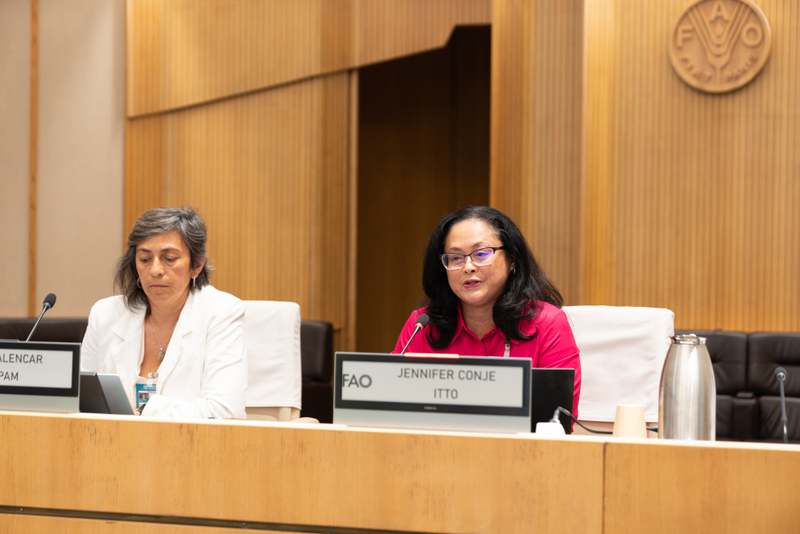
Regional lens on a global crisis
Lucy Amissah, Principal Research Scientist at Ghana’s CSIR-Forestry Research Institute, noted major shifts in the country’s fire regimes over the past 40 years.
“In Ghana, a lot has really changed in terms of the behaviour of fire,” she explained. “Prior to 1983, we had fires in the transition zone”—ground fires that were slow-spreading and low-impact. “(But) after the 1983 El Niño, almost all the vegetation zones that we had in Ghana burned. And since then, we have been having recurrent annual fires.”
These fires “have impacted the structure and composition of our forests,” she noted. “Majority of the forest reserves located in the transition zone have been converted from very good forest to savannah,” said Dr Amissah. “Dry season rainfall has decreased about 30% in most of the reserves that are located in the transition zone,” she added.
In Indonesia, peatland degradation has heightened fire vulnerability and climatic conditions.
“During a 21-year study period from 2001 to 2021, we discovered that significant rises in the number of peatland fires were closely linked to higher (temperature) and less precipitation,” said Israr Albar, Deputy Director of Forest Fire Management at the Ministry of Forestry.
Indonesia is now prioritizing prevention through community engagement. “This effort is focusing on underlying causes to make wildfire and damage less likely, as well as field activities such as community awareness, water level management, and so on,” said Mr Albar. “We also developed what we call land preparation without burning, and tailored guidelines which came out of a project supported by the ITTO.”
In Brazil, fires are closely tied to land use and deforestation.
Brazil “holds distinct ecosystems with different fire regimes,” said Ane Alencar, Science Director of the Amazon Environmental Research Institute (IPAM).
She described how the 2024 drought pushed fire levels past a threshold. “In 2022, only 15% of the standing forest (in the Amazon) was affected by forest fires, while in 2024 it was 45%, and that is very off the curve.”
She emphasized the need for a management shift—from reactive to proactive—prioritizing prevention over suppression.
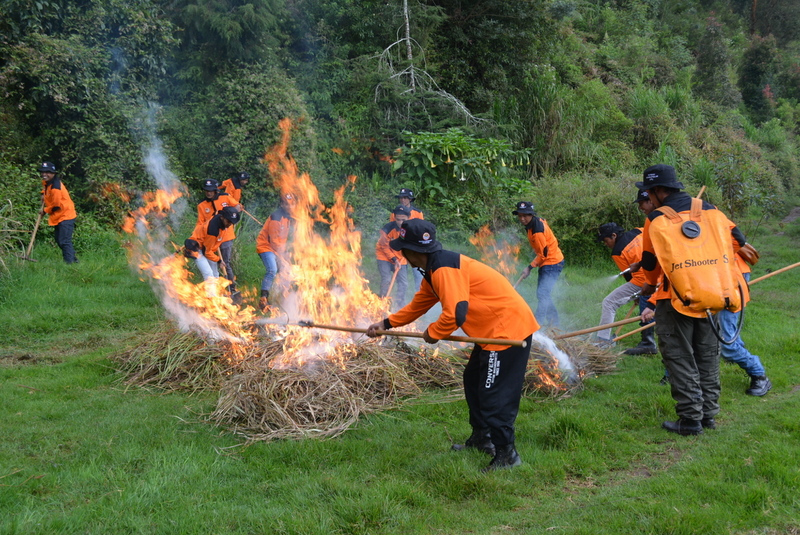
Strengthening integrated fire management in the tropics
When asked about urgent Integrated Fire Management needs, panellists highlighted capacity building, risk mapping, and restoration.
“For Ghana, we think that conducting fire risk assessment is extremely important because it helps us to be able to determine where we can allocate our scarce resources,” said Dr Amissah. Alongside this, capacity development is needed to formulate fire management plans, policy frameworks, and post-fire restoration strategies using a range of methods and approaches.
Mr Albar outlined Indonesia’s “5R” framework—risk reduction, readiness, response, recovery, and restoration—and emphasized prevention and recovery. For him, recovery is crucial, involving the restoration of burned areas through community involvement, monitoring, and law enforcement. Local engagement is key. “We have more than 2,000 fire brigades” and “at least 10 000 members of the fire care community,” Mr Albar reported.
Dr Alencar acknowledged that fire is an important land management tool. We need to manage it more effectively and minimize its use where it's not necessary. To achieve this, she called for better tools and governance. “We need to improve our fire intelligence and the tools and actually provide capacity building for people to use it at different scales… we need to strengthen prevention and awareness actions.”
She warned against treating fire as a “forestry-only issue”. Fire management requires collaboration across ministries, municipalities, and sectors, encompassing forestry, agriculture, environment, and enforcement, at both local and national levels.
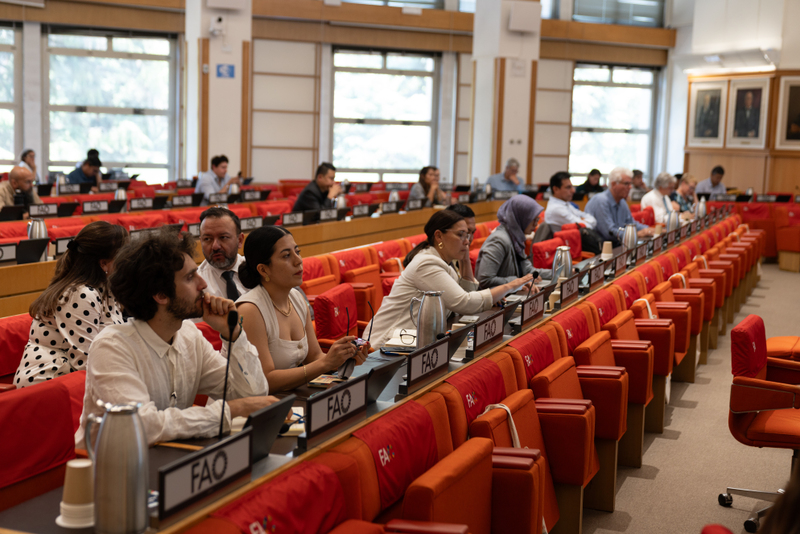
Toward a tropical fire working group
Whether the Global Fire Management Hub should create a sub-working group on tropical forests was explored at the side event.
Dr Amissah supports the idea as the socio-cultural context is different in tropical regions. “In Ghana, most of the fires are caused by anthropogenic factors, that is, factors associated with people's livelihoods,” she said. A tropical working group could address early warning systems, post-fire restoration methods, fire education, and help mobilize resources for local tools and training.
Mr Albar emphasized the unique biodiversity of tropical ecosystems and the associated fire risks, particularly in peatlands and rainforests. He believes that a working group could focus on financial mechanisms, community empowerment, public–private partnerships, and the circular economy in the context of forest fires.
There is a pressing need for a platform to share knowledge, as fighting fires in tropical rainforests presents a distinct challenge. “I think that we can use a place to communicate, to exchange, to learn from each other,” said Dr Alencar. “We need to better understand the impacts of these fires on different forests in the world.”
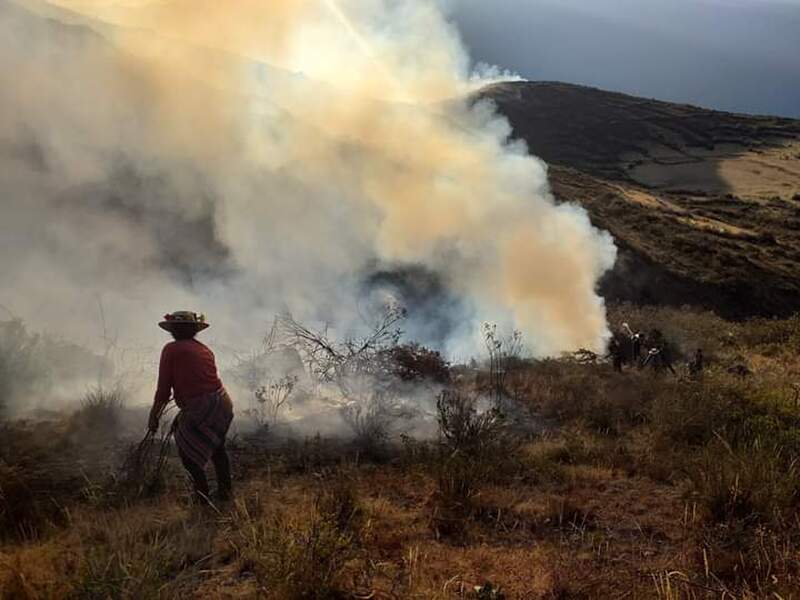
New toolkit for tropical fire management
At the end of the session, Ms Conje announced that ITTO is currently developing a Tropical Fire Management Toolkit, a digital clearinghouse for existing tropical fire knowledge, including guidance, policies and tools tailored to tropical countries. The goal is to bridge the knowledge gaps by organizing existing guidance, data, and tools in an intuitive and interactive portal.”
The world may be waking up to fire risk, but tropical countries have been living with it for decades. “Since the 1990s, ITTO has highlighted forest fires as a serious matter,” said Ms. Sheam Satkuru, ITTO Executive Director. “Tropical fire management deserves much-needed attention for climate, biodiversity, and development goals.”
Related links
TFU 24-2: Putting a brake on wildfire
Capacity building on forest and land fire management in Indonesia
Forest fire prevention and response in tropical forests and forest plantations in Peru
ITTO forest fire projects spark learnings to inform policy
ITTO to revise fire management guidelines, Executive Director tells Fire Hub meeting
Focus Area: Integrated Forest Fire Management